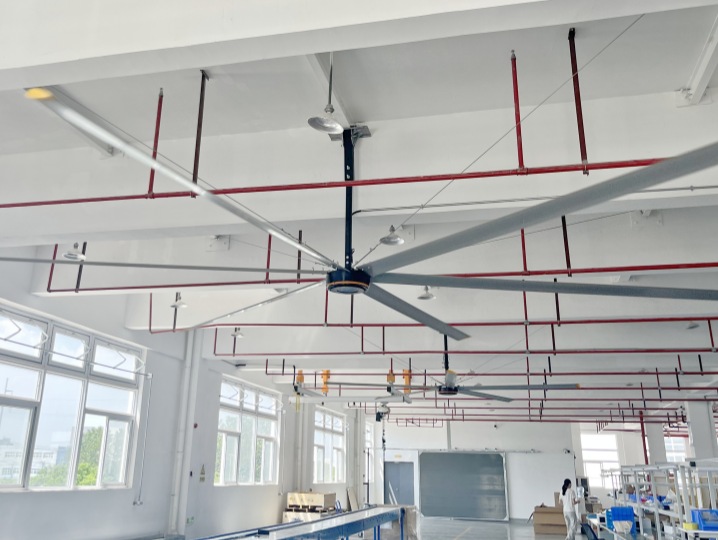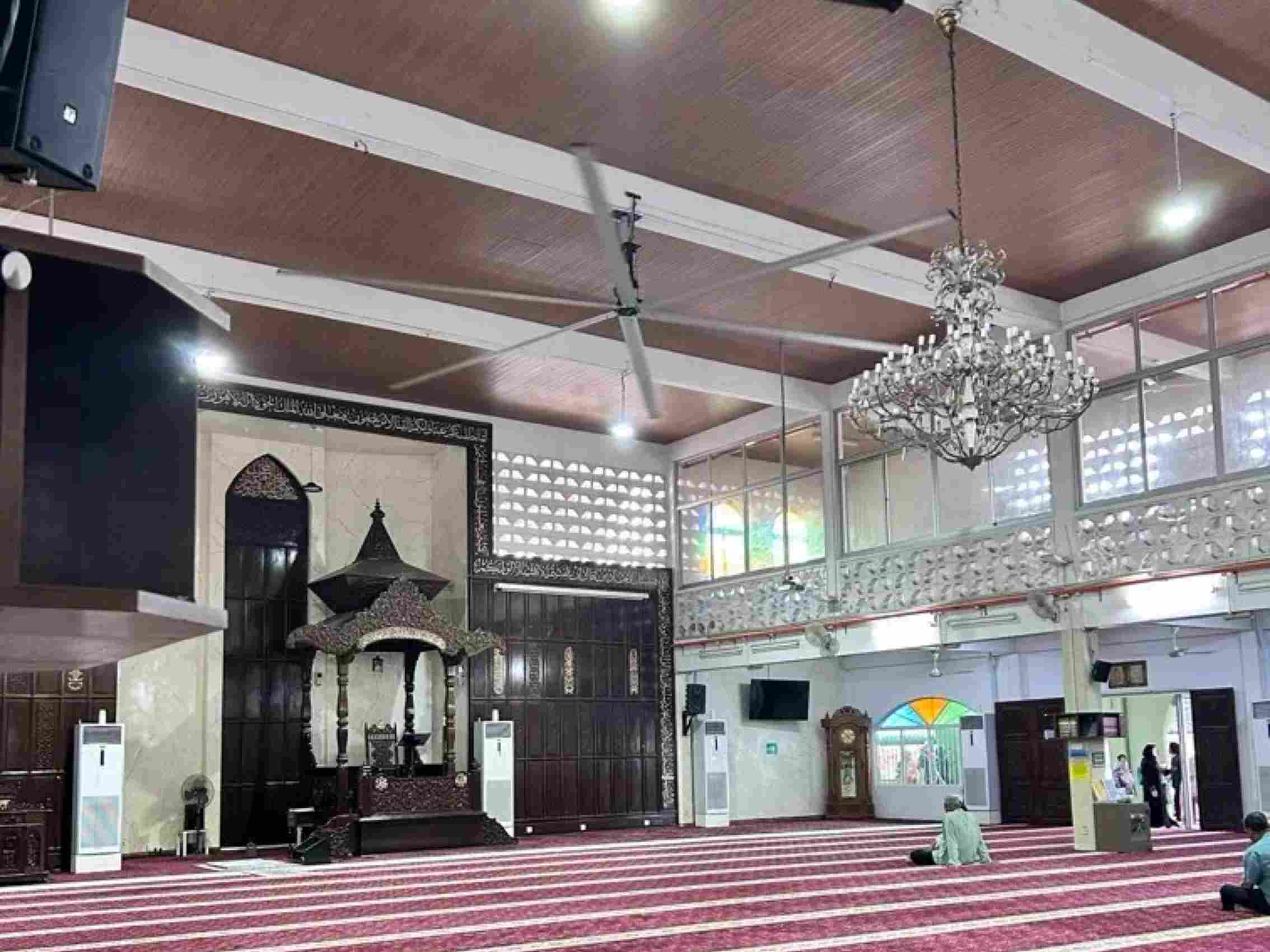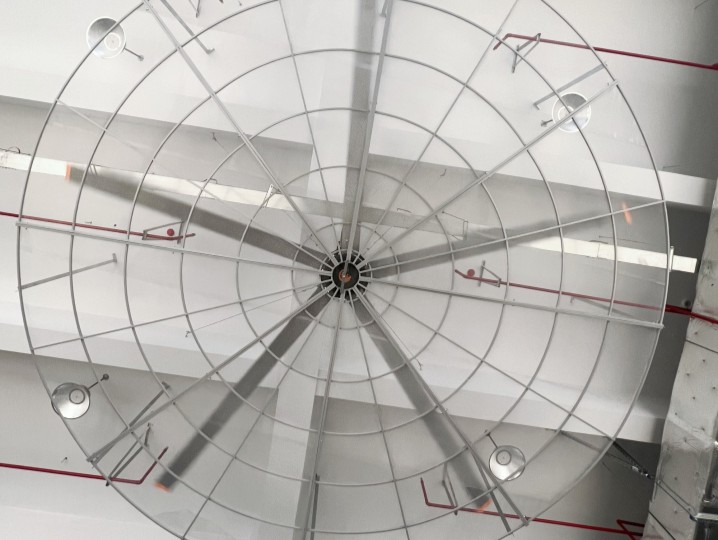Warehouse Exhaust Fan (Industrial Negative Pressure Fan)
1. Working Principle
The industrial negative pressure fan operates on the principles of aerodynamics. By rapidly rotating its blades, it creates a powerful negative pressure zone that draws indoor air out, thereby establishing a continuous airflow cycle. This negative pressure effect facilitates the quick replacement of indoor air with fresh air from outside, achieving large-scale and efficient ventilation and cooling.
The negative pressure fan must work in coordination with ventilation openings. By extracting hot air, moisture, dust, or odors from indoors, it maintains fresh air circulation and improves the air quality in workshops or warehouses.
2. Functions
- Ventilation and Air Exchange: Rapidly expels indoor heat, humidity, and harmful gases to ensure air circulation.
- Cooling and Dehumidification: When combined with water curtains, it achieves significant cooling effects, suitable for hot warehouse or workshop environments.
- Improves Air Quality: Effectively removes odors and dust, enhancing workplace comfort.
Energy Efficiency: Consumes less energy compared to traditional air conditioning, making it ideal for large-scale ventilation needs.
3. Materials
The materials of negative pressure fans vary based on application scenarios and requirements. Common materials include:
- Housing Material: Typically galvanized steel, stainless steel, or aluminum alloy, offering corrosion resistance and durability suitable for industrial environments.
- Blade Material: Often aluminum alloy, stainless steel, or FRP (fiberglass-reinforced plastic), providing high strength and lightweight properties, reducing noise and improving efficiency.
Protective Mesh: Made of high-strength steel wire, treated with galvanization or powder coating to ensure safety and durability.
4. Specifications
Industrial negative pressure fans come in various sizes and airflow capacities to meet diverse needs. Common specifications include:
- Fan Diameter: 600mm, 800mm, 1000mm, 1400mm, etc.
- Airflow Capacity: Ranges from 10,000 cubic meters per hour to 50,000 cubic meters per hour, depending on the fan size and blade design.
Power: Typically between 0.75kW and 2.2kW, with power proportional to airflow capacity.
5. Conclusion
Industrial negative pressure fans are highly efficient, energy-saving, and eco-friendly, making them widely used in warehouses, workshops, greenhouses, and livestock farms. By selecting appropriate fan specifications and materials and arranging installations based on specific environmental needs, these fans significantly improve indoor air quality and workplace comfort. They are an ideal solution for ventilation and cooling in modern industrial settings.
 New Year Holiday Notice
New Year Holiday Notice
 Large Ceiling Fans: The Soluti
Large Ceiling Fans: The Soluti
 Enhancing Public Comfort with
Enhancing Public Comfort with
 Fall Prevention Measures for L
Fall Prevention Measures for L
